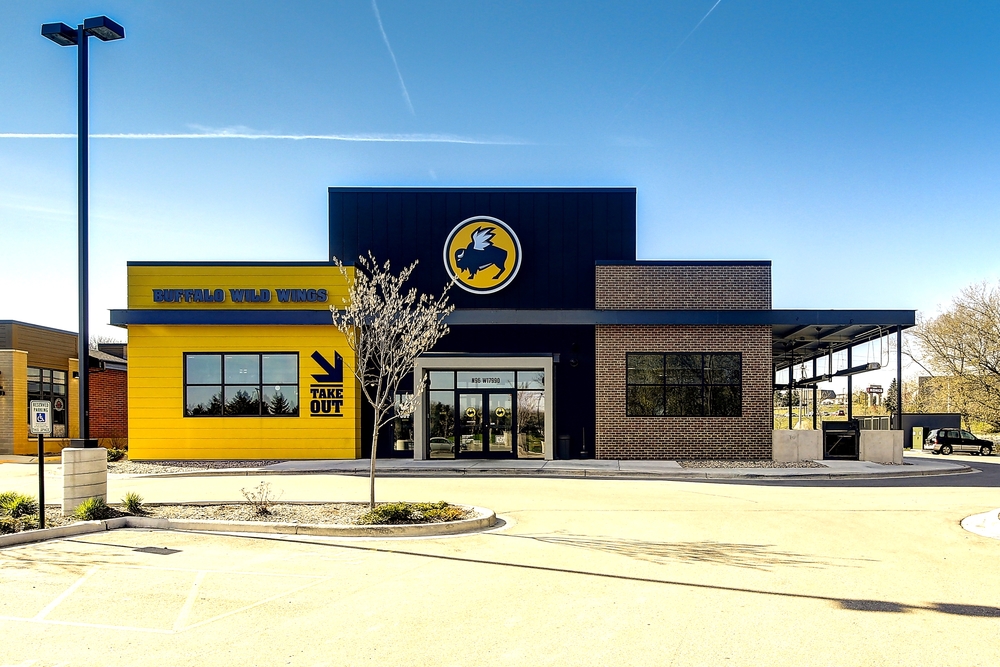The concept of 1031 exchanges is a strategic investment move that allows you to defer capital gains tax when you reinvest the proceeds from the sale of an investment property into another like-kind property. This strategic move not only postpones your tax obligations but also fortifies your investment portfolio.
NNN properties for sale present a unique segment in the real estate market. Because of their long-term lease agreements and the transferred responsibilities to the tenants (leasee), triple-net properties offer investors an attractive blend of stability and profitability.
When 1031 exchanges are applied to triple-net properties, you pave the way for sustained investment growth. 1031 exchanges are not just about deferring taxes, but it enables you to craft future-proof investments that are easily scalable. Let’s understand the concept of 1031 exchanges al little bit further.
What is a 1031 Exchange?
A 1031 exchange is a viable strategy for investors looking to maximize their triple-net lease investments. This IRS-sanctioned process allows you to defer capital gains tax which makes it advantageous when selling and reinvesting in another property.
It’s a legal framework designed to encourage continuous investment growth. By using a 1031 exchange, you sell one investment property and then reinvest the proceeds into another like-kind property. This action smartly postpones the payment of capital gains tax, thereby keeping more capital in your investment cycle.
The Synergy between 1031 Exchanges and NNN Properties

Triple-net properties for sale are characterized by their triple-net leases. They type of lease transfers the responsibilities of managing the property and property related expenses to the tenant or leasee.
A 1031 exchange makes it possible for you to maintain a fluid and tax-effecient investment journey. 1031 exchanges catalyze growth of your real estate investment portfolio. All NNN properties are legally categorized as business or investment properties and therefore are eligible for 1031 exchanges.
For savvy investors who understand how to apply such a tax-deferment strategy, 1031 exchanges are a game changer for investment properties. By deferring tax, you have an opportunity to preserve more capital and invest in more properties. This liability allows for larger investments in triple-net lease properties which are known for their stable cash flow and lower operational responsibilities thanks to tenants covering most expenses.
Generally speaking, the combination of transferring insurance, tax, and property management responsibilities to tenants with the ability to move capital from one property to another without immediate tax implications optimizes returns and reduces operational costs associated with investment properties. If you need more information about NNN investment properties and how to apply 1031 exchanges, speak with one of our triple-net lease consultant.
Step-by-Step Guide to Applying a 1031 Exchange on an NNN Property
1. Plan Your 1031 Exchange
A 1031 exchange is guided by the Internal Revenue Code and demands precise timing and compliance. The process begins with the decision to sell a current investment real estate property and reinvest the proceeds in a property of equal or greater value, adhering to the 1031 exchange rules.
This step involves understanding the tax implications, including capital gains taxes and depreciation recapture, and ensuring that both the relinquished property and the new property are for business or investment purposes.
2. Engage a Qualified Intermediary
Before selling the relinquished property, you must engage a qualified intermediary (QI). This exchange facilitator holds the proceeds from the sale, ensuring that the investor doesn’t take constructive receipt of the funds, which is vital for maintaining the tax-deferred status.
The QI also prepares the necessary legal documents, following the guidelines of the Internal Revenue Service, to structure the exchange correctly.
3. Sell the Relinquished Property
Your triple-net lease property must have been used for business or investment purposes. The sale proceeds go directly to the QI, who holds them in a secure escrow account. The investor must ensure the sale aligns with the criteria for a 1031 exchange to avoid immediate tax liabilities.
4. Identify Potential Replacement Properties
After the sale, you have 45 days to identify potential replacement properties. The properties identified must meet the criteria of being like-kind, which in 1031 exchanges, broadly refers to investment properties or rental property used for business or investment purposes. The identification must be in writing, specifying the market value and location, and given to the QI.
5. Purchase the Replacement Property
Once potential replacement properties are identified, you have up to 180 days from the sale of the relinquished property to close on the new property. This replacement property must be of equal or greater value to fully defer paying taxes. During this period, you may perform a reverse exchange, purchasing the new property before selling the old one, if needed.
6. Complete the 1031 Exchange
The final step is the completion of the exchange. The QI uses the funds held in escrow to purchase the replacement property. The transaction must be structured as a delayed exchange. This is where you don’t take direct control of the sale proceeds at any point. After the purchase, the QI transfers the title of the new property to you, thus completing the 1031 exchange process.
7. Report the Exchange on Your Tax Return
Finally, the investor must report the 1031 exchange on their tax return for the year in which the exchange occurred. This is done using IRS Form 8824, which details the properties exchanged, the dates of the transactions, and any capital gains deferred.
Tips for Successful 1031 Exchanges in NNN Investments

Assess Property Types
Understand that not all property types qualify for a 1031 exchange. For a successful exchange, both the relinquished property and the new rental property should be real property used for business or investment purposes.
This can include office buildings, vacant land, or NNN properties. Avoid personal property, primary residence, vacation homes like beach houses, and partnership interests as they don’t qualify.
Work with Experienced Triple-Net Lease Real Estate Agents
Engage with experienced and qualified triple-net lease brokers who have a proven track record in the real estate market, particularly in tax deferred exchanges. Their expertise can be invaluable in finding potential replacement property options and navigating the complex exchange process, whether you’re looking for one property or eyeing multiple properties.
Understand Fair Market Value (FMV)
Ensure that the purchase price of the replacement property is equal to or greater than the fair market value of the relinquished property sale. This is crucial to fully defer paying taxes. If the new property is of lower value, you may end up paying tax on the difference, leading to an unexpected tax liability.
Keep an Eye on Timing
Remember the strict timelines: you have 45 days to identify up to three properties as potential replacements and 180 days to complete the purchase. Missing these deadlines could result in a failed exchange and a big tax bill.
Evaluate Debt and Equity Requirements
Be aware of the existing mortgage or other debt on the relinquished property. In a 1031 exchange, the new property should have an equal or higher amount of debt. If the debt on the new property is lower, it may be considered income and could result in a tax liability.
Leverage Exchange Accommodation Titleholder for Reverse Exchanges
Consider using an exchange accommodation titleholder for reverse exchanges, where you acquire the new property before selling the existing one. This can be beneficial in a competitive real estate market where securing the right property quickly is crucial.
Account for All Costs
Factor in all closing costs and fees when calculating the exchange funds. The costs associated with the purchase of the replacement property should be included in the exchange to avoid paying taxes on these amounts.
Diversify with Multiple Properties
Consider diversifying by identifying and closing on more than one property. The IRS allows identification of up to three properties regardless of their total market value, offering an opportunity to spread your investment across various types of real estate.
Adhere to Legal and Tax Code Requirements
Always ensure compliance with the tax code and legal requirements. Missteps in adhering to IRS rules can lead to the denial of the exchange and the consequent tax implications.
Seek Professional Advice
Consult with a tax advisor or a financial institution experienced in 1031 exchanges. Their guidance is crucial in navigating the complexities of the exchange process, especially when dealing with properties like raw land, new rental property, or an office building.
Common Mistakes to Avoid During the 1031 Exchange Process
Missing Critical Deadlines
One of the most common pitfalls in a 1031 exchange is not adhering to the strict timelines. Investors have 45 days from the sale of the relinquished property to identify potential replacement properties and a total of 180 days to complete the purchase. Overlooking these deadlines can lead to the disqualification of the exchange, resulting in significant tax liabilities.
Misunderstanding ‘Like-Kind’ Property
A frequent misconception is the interpretation of ‘like-kind’ property. It’s vital to understand that ‘like-kind’ refers to the nature of the investment rather than the type of property. For instance, you can exchange an apartment building for raw land or an office space, as long as all properties are for investment purposes. Using a 1031 exchange to acquire a personal residence or a property not held for investment or business purposes disqualifies the exchange.
Improper Handling of Exchange Funds
The exchange funds must not be accessed or used by the investor between the sale of the relinquished property and the purchase of the new property. Mismanagement or direct possession of these funds can invalidate the exchange. It’s crucial to use a qualified intermediary to handle these funds appropriately.
Overlooking Debt and Equity Rules
Investors often overlook the rule that the debt on the replacement property must be equal to or greater than the debt on the relinquished property. Failing to maintain this balance can lead to tax consequences on the debt relief.
Choosing the Wrong Replacement Property
Selecting a replacement property that doesn’t meet your investment goals or isn’t financially viable is a common error. It’s important to conduct thorough research and due diligence before finalizing the replacement property to ensure it aligns with your investment strategy.
Neglecting Proper Documentation
Accurate and complete documentation throughout the 1031 exchange process is critical. This includes paperwork for the identification of potential replacement properties and all transactions involved in the exchange. Lack of proper documentation can lead to challenges in proving the validity of the exchange.
Not Consulting with Tax and Legal Experts
Attempting to navigate a 1031 exchange without professional advice can lead to costly mistakes. Tax laws and regulations surrounding 1031 exchanges are complex, and professional guidance from tax advisors and legal experts is essential for a successful exchange.
Ignoring Replacement Property Value Requirements
Some investors mistakenly acquire a replacement property of lesser value than the relinquished property. To fully defer taxes, the replacement property must be of equal or greater value. Failure to comply results in partial tax liability.
Failing to Consider All Costs
Not accounting for all costs associated with the purchase of the replacement property can be problematic. This includes closing costs, which should be factored into the total exchange value to avoid unexpected tax implications.
Rushing the Process
Rushing into a 1031 exchange without proper planning and consideration can lead to unsuitable property choices and financial discrepancies. It’s crucial to take the time to understand every aspect of the exchange process and make informed decisions.
Other Benefits of Triple-Net Lease Properties

Predictable Revenue Stream
NNN leases provide a steady and predictable revenue stream for property owners. Tenants are responsible for most expenses, including taxes, insurance, and maintenance. This arrangement ensures a consistent income, as the landlord’s revenue is not affected by variable operating costs.
Low Management Responsibilities
One of the key attractions of NNN properties is the minimal management required. Since tenants handle most of the property’s operational responsibilities, owners are relieved of the day-to-day management tasks. This benefit is particularly appealing for investors who prefer a hands-off approach.
Long-Term Lease Agreements
NNN properties often come with long-term lease agreements, usually spanning several years. These extended contracts provide a stable and long-term income source, reducing the frequency of tenant turnover and the associated costs of finding new lessees.
Potential for Long Term Quality Tenants
NNN leases typically attract high-quality tenants, such as established retail chains or corporate entities. These tenants are more likely to be financially stable and reliable, reducing the risk of default and ensuring a more secure investment.
Property Value Appreciation
Real estate investments, including NNN properties, generally appreciate over time. This appreciation adds to the investment’s overall return, offering the potential for capital gains in addition to the regular income stream.
Inflation Hedge
NNN properties can serve as a hedge against inflation. Lease agreements often include rent escalations linked to inflation indices, ensuring that the rental income keeps pace with inflation and maintains its real value over time.
Asset Liquidity
NNN properties, particularly those with strong tenants and prime locations, are often highly sought after in the real estate market. This demand can provide liquidity to the property owner, allowing for easier sale or leverage of the property when needed.
Ease of Financing
Due to the stability and predictable income associated with NNN properties, lenders often view them favorably. This can lead to easier financing options for investors, including potentially better loan terms and interest rates.
How to Select the Right NNN Property for Your Investment Goals
The key to maximizing your returns and achieving your investment goals lies in selecting the right triple-net property. NNN Deal Finder helps investors find, finance, and secure triple-net lease investment properties.
We have a wide selection of international brand properties in different sectors across multiple states. We also help investors maximize their returns on investments by helping them apply tax-defrement strategies like 1031 exchanges.
If you need more information about triple-net lease properties, how to find and invest in them, and effectively apply for a 1032 exchange, contact NNN Deal finder today.
Frequently Asked Questions about 1031 Exchange
1. What are the primary qualifications for a property to be eligible for a 1031 exchange?
For a property to qualify for a 1031 exchange, it must be used for business or investment purposes. The property being sold (relinquished property) and the new property (replacement property) both need to be of like-kind, which in the context of a 1031 exchange broadly refers to the nature of the investment rather than the type of property. Both properties must be within the United States.
2. Can personal use property be exchanged through a 1031 exchange?
No, personal use property cannot be exchanged through a 1031 exchange. The exchange is limited to property held for investment, business, or trade purposes. Personal residences, vacation homes primarily used for personal enjoyment, and other personal-use assets do not qualify.
3. How long do you have to hold a property before it can qualify for a 1031 exchange?
There is no set period specified in the tax code for how long you must hold a property before it qualifies for a 1031 exchange. However, the property must be held for investment purposes. The IRS may look at the intent of the property usage and the length of time held to determine if it qualifies. Typically, holding a property for at least one to two years is advisable to demonstrate investment intent.
4. What are the deadlines for identifying and closing on a replacement property in a 1031 exchange?
In a 1031 exchange, you have 45 days from the date of selling the relinquished property to identify potential replacement properties. Furthermore, you must close on the new property within 180 days of the sale of the original property. These timelines are strict, and failure to adhere to them can disqualify the exchange.
5. Are there any tax implications if a 1031 exchange is not completed within the IRS timelines?
Yes, if a 1031 exchange is not completed within the IRS timelines, it results in tax implications. The sale of the original property is treated as a taxable event, and any capital gains from the sale become subject to capital gains taxes. This underscores the importance of adhering to the 45-day identification period and the 180-day completion deadline for the exchange.

